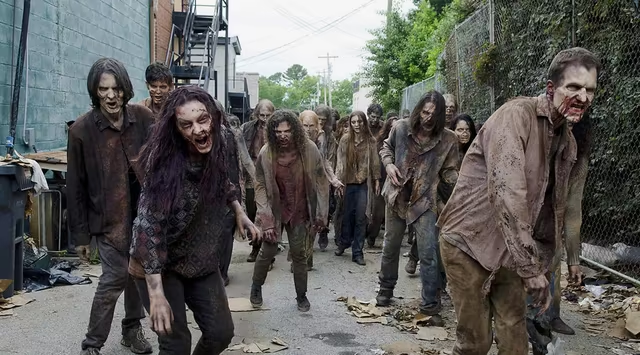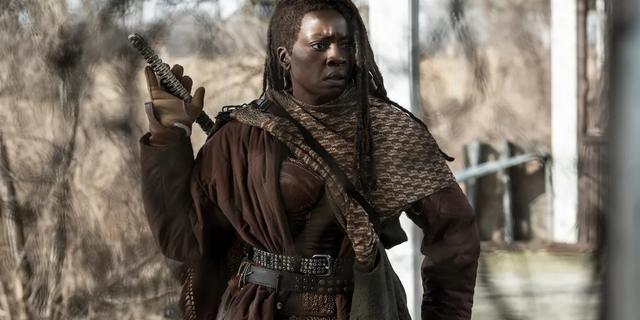If you click on a link and make a purchase we may receive a small commission. Read our editorial policy.
DC's Knight Terrors ending explained: How the crossover event goes beyond the nightmares
The 2023 crossover event Knight Terrors carries steep consequences for DC's heroes beyond scary dreams. Here's the story's bigger impact.

DC Comics’ Summer 2023 crossover event Knight Terrors has come to an end with its concluding special Knight Terrors: Night’s End #1 by Joshua Williamson, Howard Porter, Giuseppe Camuncoli, Stefano Nesi, and Trevor Hairsine. Knight Terrors introduces new supervillain Insomnia, a surreal figure with the power to plunge victims into their worst nightmares, which he uses to fuel his bitter vendetta against the DC Universe’s greatest heroes. And though most of that action takes place within the realm of dreams, there are certainly consequences stemming from Insomnia's actions that play a noticeable impact in the DCU’s waking world.
Here is how Knight Terrors changes the DCU as heroes emerge from Insomnia’s nightmare-laced scheme, how this arc seamlessly ties into wider developments across the universe that have been brewing all year, and what this could lead to in the coming months.
Spoilers for Knight Terrors: Night's End #1 below
What happened at the end of Knight Terrors?

Though Knight Terrors is predominantly focused on how Insomnia’s nightmares affect the major heroes and villains of the DCU, Night’s End makes it clear from its opening pages that more than just costumed characters are affected. The general populace also experience vividly terrifying nightmares twisting heroes into fearsome figures. Many ordinary people who normally support the superhero community suffer from nightmares where superheroes' familiar faces are transformed into those of their personal tormentors in Insomnia’s collective dream world.
With the help of Deadman and the Golden Age Sandman Wesley Dodds, the heroes manage to wake themselves back up and confront Insomnia in the waking world, only to discover the villian can physically manifest their nightmares. Sandman uses the old Justice League enemy Doctor Destiny's Dream Stone to turn the tide of battle, trapping Insomnia in a nightmare of his own and ending the conflict.
Though Insomnia is defeated and the world is freed from his relentless nightmares, the doubts and fears that Insomnia instilled remain just as salient as ever. After the shared experience of suffering from traumatizing nightmares that depicted the superhero community in a monstrous light, public support and sentiment towards the heroes is at an all-time low. As the heroes commiserate over their recent ordeal against Insomnia, Superman contemplates that this is one victory that doesn’t feel like a win at all, as life is poised to become considerably more difficult from him and his colleagues moving forward. Unbeknownst to the Man of Tomorrow, Waller intends to use this public reversal to further her agenda, continue to plot from the shadows.
Amanda Waller’s Dawn of DC plot

The one person to benefit from the immediate fallout of Knight Terrors is disgraced intelligence agency bureaucrat and Suicide Squad leader Amanda Waller. Waller makes it quite clear that while she has nothing directly to do with Insomnia or his plans, her own agenda has benefitted from his actions, specifically from his role in turning the public against the superhero community.
It doesn't help that two powerful items, the Nightmare Stone and the mysterious Helmet of Hate, are now secretly with Amanda Waller as she continues her plans against the heroes. Waller's conspiracy has been brewing ever since the start of the Dawn of DC era, with the corrupt bureaucrat taking advantage of the chaos that Insomnia caused.
Following the 2022 crossover event Dark Crisis on Infinite Earths by Joshua Williamson and Daniel Sampere, Waller is seen consulting with a shadowy council to eradicate metahumans from Earth. Among Waller’s trusted associates to carry out this directive is Peacemaker, with the two escalating their plans by placing a secret bounty on all the heroes’ heads. Now with the public turning against the heroes, Waller may receive more official support in persecuting the heroes and could use the Nightmare Stone to further sway interests her way.
A conflict brewing on the horizon

Though Waller’s stance with the American government is currently on shakier ground, Peacemaker appears to be very much in the government’s good graces during the subsequent Dawn of DC era. Peacemaker has attempted to bring both the Doom Patrol and Titans directly under government control since both teams have relaunched in the DCU, only for the heroes to understandably dismiss his aggressive overtures. Even corporate sponsored ensembles like the WildC.A.T.s are on Peacemaker’s radar as the antihero seeks to broaden the government’s control over the superhero community by any means necessary.
With Knight Terrors’ legacy felt throughout the DCU, the government could offer a firmer ultimatum in getting the heroes to comply with their orders, now backed by widespread public distrust in any and all costumed crusaders. In a way, this is reminiscent of the 2006 Marvel Comics crossover event Civil War, by Mark Millar and Steve McNiven, which saw the American government force the Marvel Universe’s heroes to register their secret identities with them or be considered outlaws. However, this DCU approach to similar themes come with the established caveat that Waller has sinister things in store for the heroes if given the agency to move forward with her agenda, underscoring a heightened sense of tension and menace.
Dawn of DC's revisit of Legends?

This is by no means the first time DC heroes have dealt with authority figures trying to subjugate or stop them. For decades, Batman’s relationship with the police has oscillated between being a tacit ally to another wanted costumed figure in Gotham City, with Frank Miller using this to great effect in both The Dark Knight Returns and Batman: Year One. More recently, the Scarecrow pit the authorities against the Bat-Family in the 2021 crossover event Fear State in an effort to plunge Gotham into a police state under his control.
The first major instance of the public turning against superheroes for a prolonged period is in the 1986 crossover event Legends by John Ostrander, Len Wein, John Byrne, and Karl Kesel. In this event, Darkseid orchestrates an insidious plot to turn humanity against the heroes, sending his New God acolyte Glorious Godfrey to pose as a news pundit and use his telepathic powers to turn sentiment against the heroes. Darkseid also arranges for several public events to fuel this anti-hero agenda, most notably a disastrous battle for the Justice League and the framing of Shazam for murder. This leads to the formation of Justice League International, which defeats Godfrey and exposes Darkseid plans, restoring the heroes’ more respectable place in the world.
Legends offers clear parallels to recent developments throughout Dawn of DC, including the government becoming increasingly involved in monitoring and attempting to regulate superhero activity and wide public support for heroes waning. The 1986 event also created the modern iteration of the Suicide Squad, something that speaks directly to Waller’s role in Dawn of DC as she emboldens her attacks on the heroes, with the Green Arrow family among her early targets.
More than just transposing the themes and premise of A Nightmare on Elm Street into the DCU, Knight Terrors quietly furthers the grander storyline behind the Dawn of DC era. Coming out of Dark Crisis, the heroes are victorious, though the Justice League is disbanded in the immediate aftermath. Like Legends, with their backs publicly against the wall, the heroes may need to form a new Justice League if they hope to endure what Waller has planned for them in grand fashion, now without the public support they’ve long enjoyed.
Collecting Knight Terrors: First Blood #1, Knight Terrors #1-4, and Knight Terrors: Night’s End #1, the Knight Terrors hardcover collection goes on sale February 6 and is currently available for preorder.
DC debuts a new Joker-level villain in September's Wonder Woman #1
Follow Popverse for upcoming event coverage and news
Find out how we conduct our review by reading our review policy
Let Popverse be your tour guide through the wilderness of pop culture
Sign in and let us help you find your new favorite thing.
















Comments
Want to join the discussion? Please activate your account first.
Visit Reedpop ID if you need to resend the confirmation email.